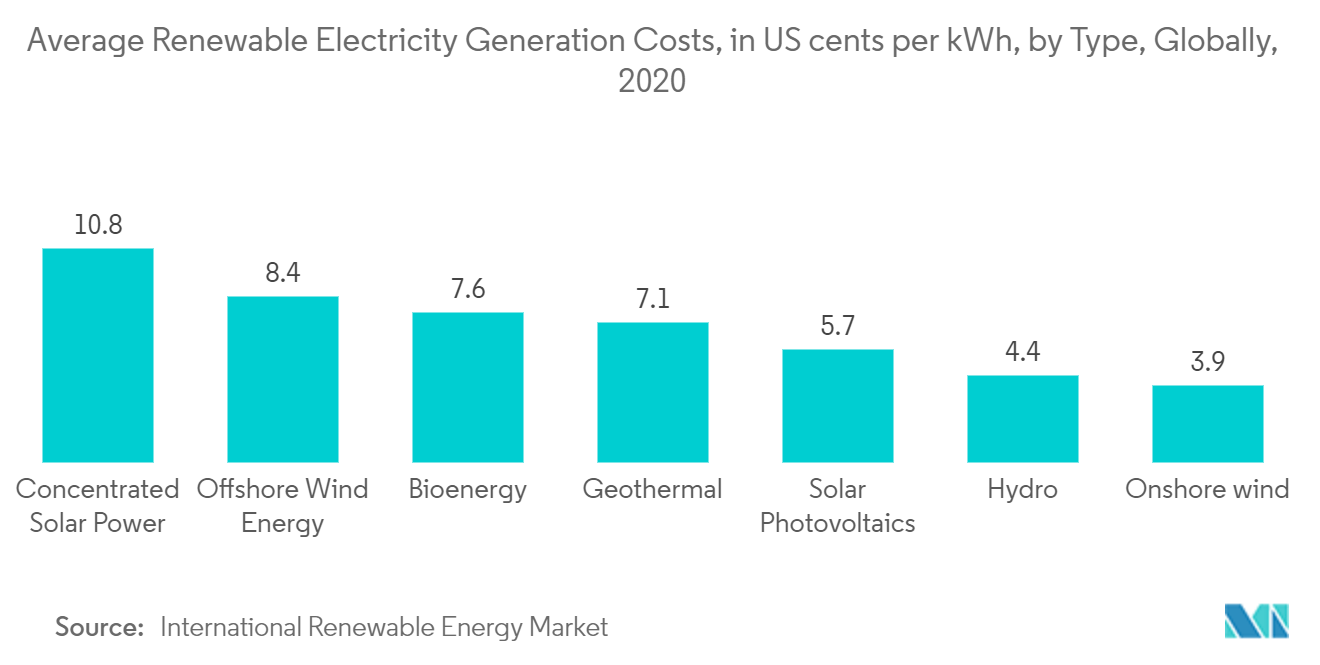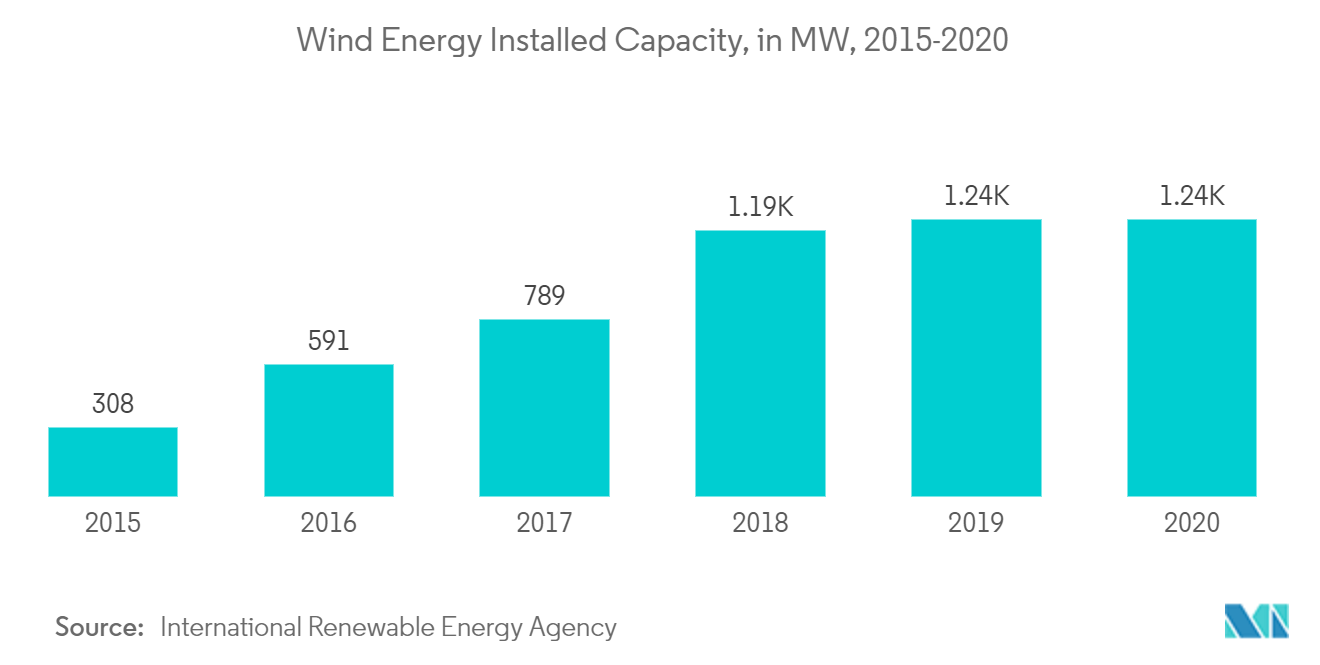Market Trends of Pakistan Wind Energy Industry
This section covers the major market trends shaping the Pakistan Wind Energy Market according to our research experts:
Improvements in Technology and Abundant Natural Resources to Drive the Market
Wind energy has seen rapid adoption in Pakistan from the beginning of the last decade, primarily due to the increasing renewable energy mix mandate by the government and improvements in wind energy technology, leading to higher efficiencies and lowered costs.
According to the International Renewable Energy Agency (IRENA), onshore wind energy is one of the cheapest sources of electricity generation globally compared with other sources of renewable energy. In 2020, the average cost of electricity generation globally through onshore wind energy was USD 0.039/kWh.
Pakistan has abundant natural resources to harness wind energy in the form of consistent and suitable wind velocity corridors.
For example, the Gharo-Jhimpir wind corridor in Sindh covers an area of 9700 sq. km., with a gross wind power potential of 43000 MW. As of January 2022, phase 2 of the renewable energy mapping project is underway to identify new corridors where wind energy can be harnessed
Furthermore, in March 2022, Din Energy Pvt. Limited started commercial operations at Jhimpir wind power station. The power plant has the capacity to produce 50 MW of electricity, and the total cost of the project was USD 65 million.
Thus, improvements in technology, which are leading to lowering of wind energy costs and increased efficiency, and the presence of significant natural resources and more under discovery are likely to drive the market during the forecast period.

Upcoming Projects and Government Policies to Propel the Market
Pakistan has abundant resources of renewable energy potential, but so far, this potential remains under-utilized except for large hydroelectric projects.
To harness the renewable energy potential, the Pakistani government formally approved the Alternative and Renewable Energy Policy 2019 in August 2020. The policy aims to boost the share of electricity generated from renewable sources from around 5% in 2020 to 20% by 2025 and a further 30% by 2030.
In March 2022, the Pakistani government showcased potential investment opportunities in the energy sector, among others, in a Pakistan-Austria Investors meet-up to encourage foreign investors with more facilities and tax breaks. The opportunities in the energy sector include wind energy, too, as the country enjoys a favorable geographic location for harnessing wind energy.
Furthermore, as of 2022, Pakistan had 26 operational wind power projects of 1335 MW cumulative capacity connected to the national grid, and a further ten wind power projects of 510 MW capacity are under construction.
Thus, owing to the above points, it is likely that the new government policies and upcoming projects are expected to drive the country's wind energy market during the forecast period.


